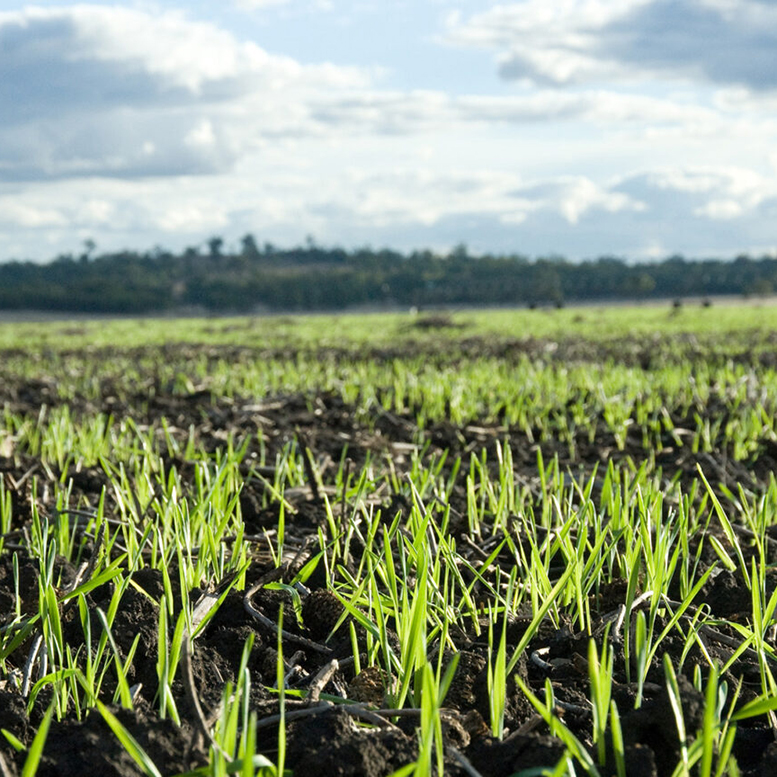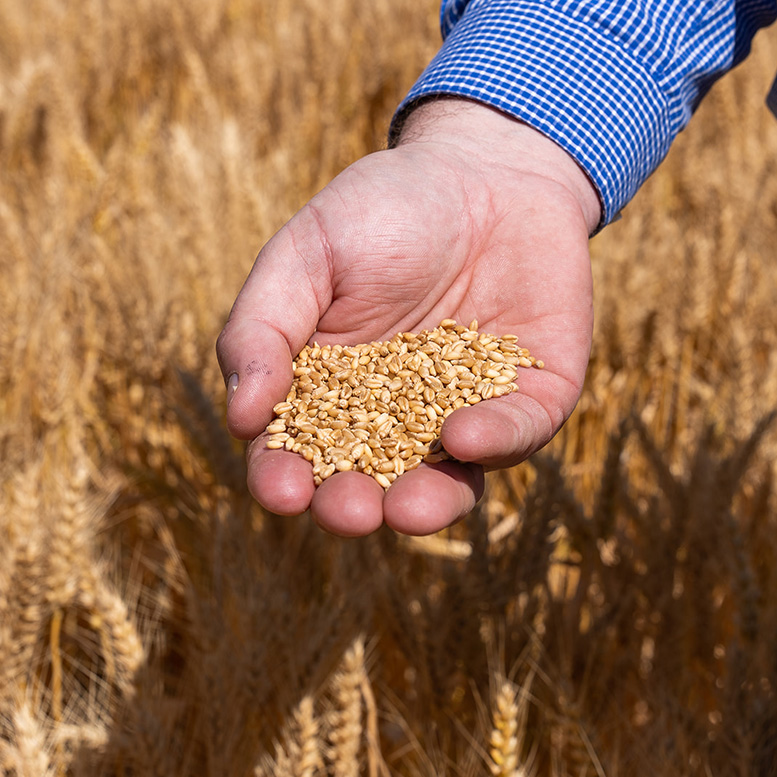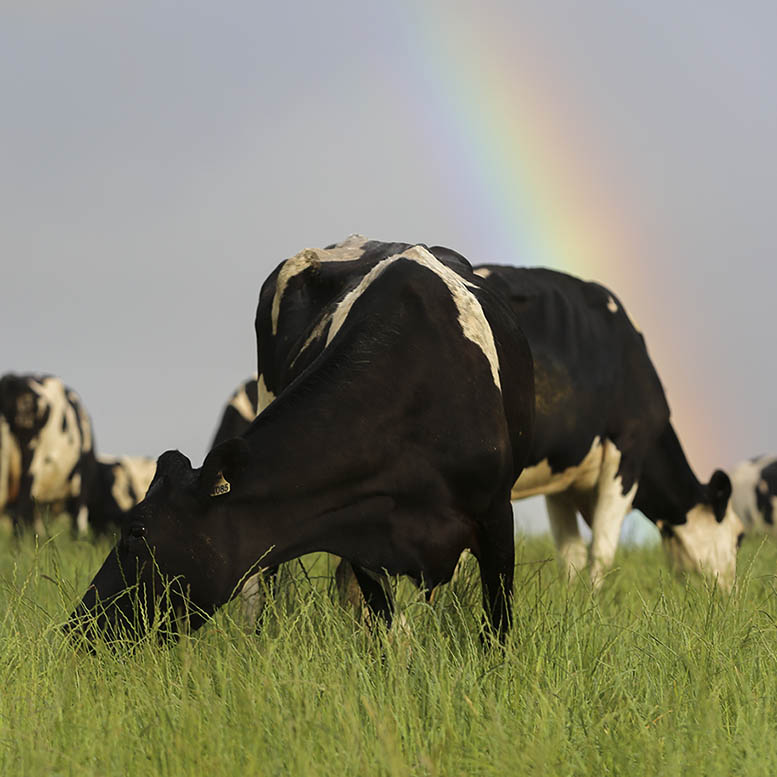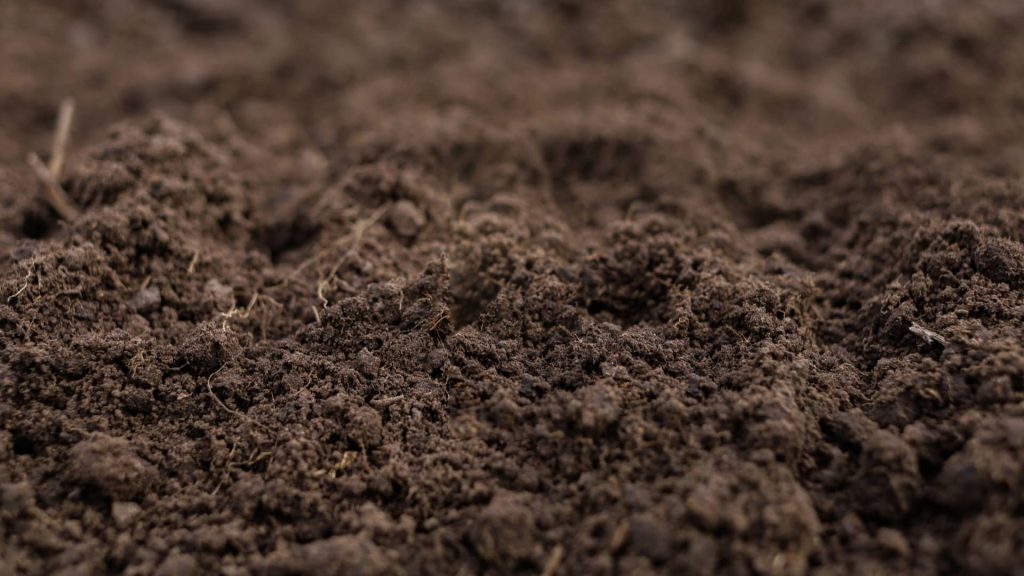Agronomic Insights

Clint Sheather – IPF Technical Agronomist
Canola production in southern Australia has been a staple in many cropping rotations providing many benefits and flexible sowing opportunities. Three consecutive years of above average rainfall and good sowing conditions have led to excellent crop establishment in recent times, but with soils drying and the 2023 autumn break forecast to arrive late, growers need to be mindful of the potential for seed damage when fertiliser is placed with the seed at planting.
Traditional phosphorus strategies
Supplying phosphorus early in the season via seed placement is both efficient and convenient. Early phosphorus promotes root growth and early season vigour with adequate phosphorus being available for uptake by seedlings early on when the crop needs it.
Seed placing fertilisers can also be toxic to emerging seedlings causing establishment issues in canola, with damage potentially caused by two separate processes.
The first is ammonia toxicity from fertilisers such as MAP and DAP that are placed too close to the seed. The second is an osmotic effect where the fertiliser competes with the seed for moisture.
Given this, it is worth considering whether alternative application strategies can improve canola establishment and maintain yields.
Considerations for the 2023 canola plant
Canola is the most susceptible crop to fertiliser toxicity, and dry soils at planting time can increase the probability of fertiliser related establishment issues.
Modern farming techniques with wider row spacing & disc/knife point seeding systems have also increased the risk of seed placed fertilisers and canola establishment.
IPF trial results
Trial work in 2021 and 2022 located at Wattamondara and Young, NSW looked at different placement options for phosphorus in canola.
The trial site had a 0-10cm Cowell phosphorus value of 25mg/kg. All treatments except the control were top-dressed at the 4 leaf and pre-budding growth stages with urea totalling 200kg N/ha. All other soil test values were non limiting.
Six rates of P were applied (0,5,10,15,20,25,30 P/ha) as MAP and SuPerfect® with the following placement methods.
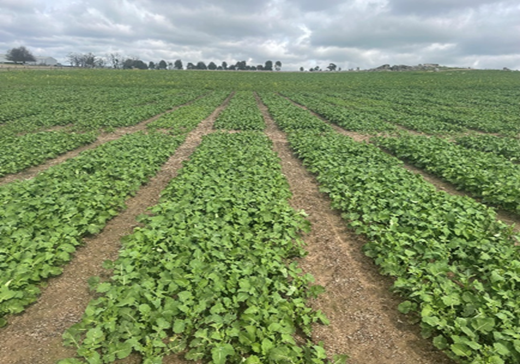
- Control – no fertiliser
- Seed placed – placed with canola seed.
- Broadcast pre plant – surface applied 3 weeks prior to seeding at Wattamondara site.
- Split applications – broadcast pre plant three weeks and seed placed.
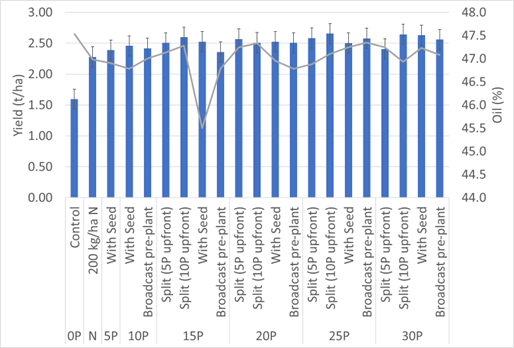
Results
- Seeding conditions were ideal, and there was little difference in plant establishment between the fertiliser treatments, highlighting the importance of adequate soil moisture when seed placing fertiliser.
- Seed placed P proved to be an efficient application method maintaining yield.
- Split P applications improved yield while providing flexible application options.
- Broadcast P improved yield compared to the control and nitrogen only treatment however this may require additional P.
Soil testing & critical Cowell phosphorus values
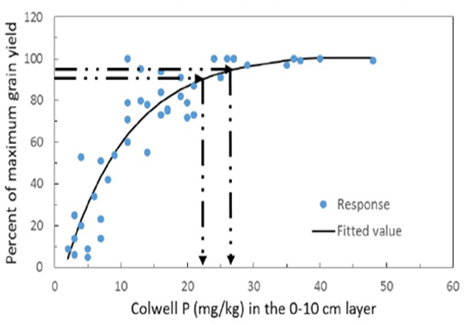
- Figure 3 represents the national critical soil test range measured for canola as Colwell P that ensures 90-95% maximum yield.
- This range will differ for other crops and test values such as PBI.
- Where Colwell P values are above 26 mg P/kg soil present an opportunity to provide a more tailored P application strategy.
- Soil testing to identify local critical ranges and other limitations will be important factors.

Understanding soil nutrient levels
Understanding the relationship between soil nutrients and crop yield can assist in efficiently managing fertiliser inputs.
- Capital application: Soil nutrient levels are below the optimal range and additional inputs may be required to build fertility
- Replacement or maintenance: Nutrients are within the optimal range. When adequate nutrient exists, any nutrient removed should be replaced. Where nutrients exceed the optimum range then fertiliser inputs may be reduced. Safe reductions in P inputs are possible where soil test values are above crop critical requirements. This practise cannot be sustained if soil test values decline below the critical P range for the target crop.
Long-term P budgeting and routine soil testing are key to determining fertiliser strategies and mitigating establishment risks.
Existing nutrient levels will inform whether a split Starter P strategy could provide the best return on investment. Starter phosphorus strategies can be used where there is a risk of seed placed fertilisers causing establishment issues. Starter P supplies small rates of 5kg P/ha to ensure root growth and early season vigour. Additional reserves of P are supplied from the soil. Where capital applications are required, a split application strategy could minimise toxicity risks by combining seed placed Starter P to maintain yield with a pre-plant broadcast to make up the balance of required inputs.
Phosphorus buffering index (PBI)
PBI is a measure of P sorption or P fixing capacities of soils. A high P fixing soil and a low P fixing soil would have different PBI values.
A high PBI would result in a greater amount of P sorption than a soil with a low PBI. P sorption can have an affect on determining critical Cowell P values. Typically, there must be a significant change in PBI to change critical Cowell P values.
Phosphorus Budgeting
Phosphorous budgeting can be another useful tool to determine nutrient input requirements, and is typically undertaken by calculating levels of P exported with the grain.
Phosphorus concentrations vary significantly between canola and wheat.
Average canola removal rates across southern Australia reported by (Norton 2014) ranged from 3.6-7.2 kg P/t grain while wheat varied from 2.3–3.6 kg P/t grain.
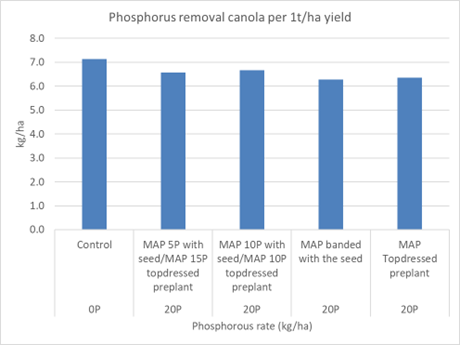
Phosphorus removal values for the 20 kg/ha of P averaged 6.1 kg P/t of grain.
These values can be used to determine P replacement rates as part of a replacement strategy and can be used in conjunction with routine soil testing.
Phosphorus source
Fertiliser type is another key consideration for growers planning to place fertiliser with the seed.
MAP is a more suitable choice when seed placing fertiliser with susceptible crops such as canola. DAP has more osmotic potential than MAP and higher potential to cause ammonia toxicity.
SuPerfect® can also be used as a phosphorus source also supplying sulphur. SuPerfect is best suited to broadcast applications pre-plant providing an alternative application method.
Light textured soils are likely to induce more damage than heavy textured soils. Fertiliser toxicity potential is increased as row space widens, increasing the amount of fertiliser distributed in the seed row.
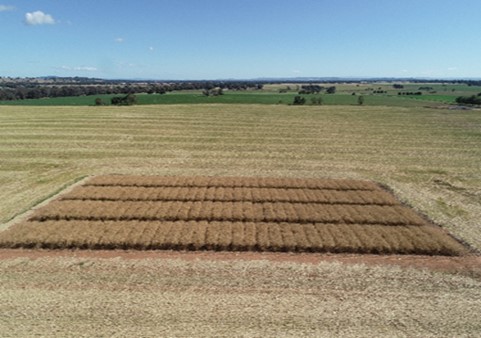
Take home messages
- Canola is susceptible to fertiliser toxicity and this worsens under dry seeding conditions.
- Nutrient budgets and soil testing can assist in tailoring P fertiliser inputs for canola.
- MAP is the most appropriate P source.
- Split P strategies can minimise fertiliser toxicity and maintain yield.
- Applying some seed placed starter P is recommended.
Acknowledgements
IPF would like to know acknowledge the trial co-operators and Kalyx for facilitating these trials.
Further Information
For more information or advice about this agronomic insight, please feel free to contact me on 0475 439 316 or clint.sheather@incitecpivot.com.au
You can also contact Jim Laycock on 0427 006 047 or jim.laycock@incitecpivot.com.au
References
Better Fertiliser Decisions for Cropping (BFDC) database (www.bfdc.com.au).
Bolland, M. D. A., & Brennan, R. F. (2008). Comparing the phosphorus requirements of wheat, lupin, and canola. Australian Journal of Agricultural Research, 59(11), 983-998.
Peverill, K. I., Sparrow, L. A. and Reuter, D. J. 1999. Soil analysis – an interpretation manual. CSIRO Publishing, Collingwood.
Norton R (2014) Canola seed nutrient concentrations for southern Australia. ARAB XVIII Conference Proceedings.
Resources
DOWNLOAD INSIGHTDISCLAIMER
This is a guide only, which we hope you find useful as a general tool. While IPF has taken all reasonable care in the preparation of this guide, it should not be relied on as a substitute for tailored professional advice and IPF accepts no liability in connection with this guide. Incitec Pivot Fertilisers manufactures and sources fertilisers from other suppliers. The fertiliser supply chain extends beyond the company’s direct control, both overseas and within Australia. Incitec Pivot Fertilisers hereby expressly disclaims liability to any person, property or thing in respect of any of the consequences of anything done or omitted to be done by any person in reliance, whether wholly or in part, upon the whole or any part of the contents of this article.


